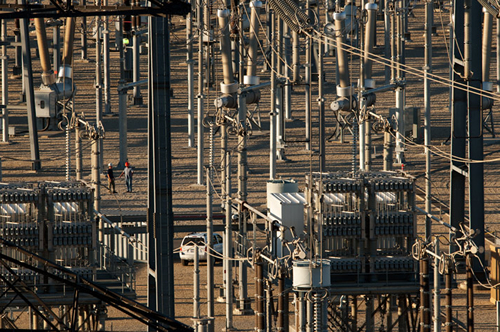
With just a single measurement, a new model may deftly describe turbulent fluid flows near an airplane wing, ship hull or cloud, researchers report in the July 9 Science. If the long-sought model proves successful, it may lead to more efficient airplanes, better ways to curb pollution dispersal and more accurate weather forecasts.
 Fluid dynamicist Alexander Smits of Princeton University calls the new model “a very significant advance†that opens up a new way of thinking about chaotic, energy-sapping turbulence.
Fluid dynamicist Alexander Smits of Princeton University calls the new model “a very significant advance†that opens up a new way of thinking about chaotic, energy-sapping turbulence.
Turbulence is a problem that extends far beyond a bumpy plane ride. Fluid flowing past a body — whether it’s air blowing by a fuselage or water streaming across Michael Phelps’s swimming suit — contorts and twists as it bounces off an edge and interferes with incoming flows, creating highly chaotic patterns. Airliners squander up to half of their fuel just overcoming the turbulence within a foot or so of the aircraft, and turbulent patterns in the bottom 100 meters of the atmosphere confound weather and climate predictions.
Physicists and engineers have had a good grip on the basic behaviors of fluids since the mid-1800s, but have been baffled by the complexity of the tumultuous flows near a boundary. “We don’t really have a handle on the physics,†says study co-author Ivan Marusic of the University of Melbourne in Australia. “So even though the problem is over a hundred years old, we still really haven’t had a major breakthrough.â€
In their new study Marusic and his colleagues measured forces in a giant wind tunnel, both near and away from a wall. Data collected by probes suggested a tight link between the small-scale turbulence near a wall and large, smoother patterns of air flow farther from the wall. In particular, newly identified flow patterns called superstructures turn out to have a big effect on the turbulence near the wall. These smooth, predictable flow patterns away from the wall change the turbulence right next to the wall in predictable ways, a link that allowed Marusic and colleagues to write a mathematical formula relating the two.
“The fact is that we were sort of amazed because it’s such a simple formulation,†Marusic says. “Now with this model, all we need to do is measure the outer flow and we can predict what’s happening near the wall.â€
If it pans out, the formula may be incorporated into models of climate, weather and pollution dispersal. And now that they have a better understanding of the near-wall turbulence, Marusic and his colleagues are trying to reduce it by manipulating the smooth flow of fluids away from a wall.
One of the strengths of the new model is that it allows the complex flow near boundaries to be reduced to a bare-bones motion that can be easily understood, says engineer Ronald Adrian of Arizona State University in Tempe, who authored an accompanying article in the same issue of Science.
“This model is a breakthrough step, but we’re not ready to say that it’s going to solve all our problems,†he says. “I don’t know if we have enough evidence yet to call it universal, but the hope is that it will be universal.â€
Image: zoagli/Flickr





















 Quick question for you: how many nukes have ever been detonated? A few? A couple dozens? How about over 2,000.
Quick question for you: how many nukes have ever been detonated? A few? A couple dozens? How about over 2,000.
